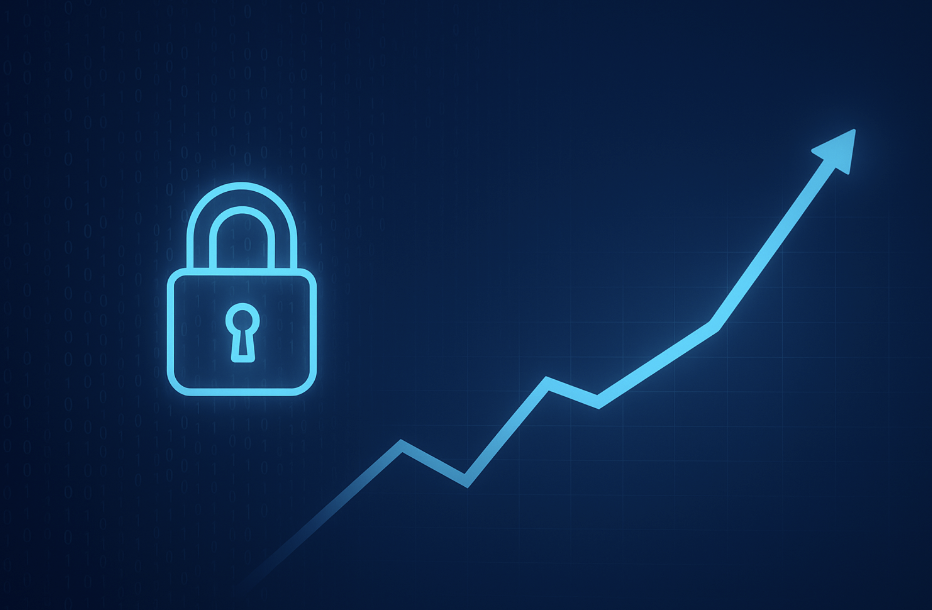The Rising Cyber Threat Landscape: Why Proactive Cyber Assurance Is Now a Business Imperative

In the 2024-25 Annual Cuber Threat Report, Australia’s cybersecurity landscape is described as the most volatile on record. The statistics reveal a concerning escalation in both the volume and sophistication of cyber-attacks, as digital infrastructure becomes increasingly integral to critical operations. As digital systems become the backbone of critical infrastructure, cyber resilience has emerged as a defining factor of business continuity and competitive strength.
For businesses across all sectors, especially those managing mission-critical facilities such as data centres, utilities, and financial systems, the message is clear: cyber resilience is no longer optional. It is now a fundamental determinant of operational continuity, regulatory compliance, and business reputation.
The Escalating Cost of Cybercrime
The financial impact of cyber incidents is climbing at an alarming rate. According to the Annual Cyber Threat Report 2024-25, the average self reported cost of cybercrime per business has risen by 50% to $80,850
When broken down by organisation size, the figures are even more striking:
- Small businesses report average losses of $56,600, up to 14% year on year
- Medium-sized businesses experience costs averaging $97,200, an increase of 55%
- large organisations face staggering losses of $202,700, representing a 219% increase compared to the previous year.
These numbers reveal a clear trend: no business is immune, and larger entities are increasingly becoming targets for more complex, high value attacks. Beyond direct financial loss, these incidents carry indirect consequences, operational downtime, data recovery costs, insurance premium hikes and significant reputational damage.
The Current Threat Landscape: Key Insights from the 2024-25 Report
The report identifies several dominant trends shaping the cyber threat environment across Australia and the broader Asia-Pacific region:
- Ransomware Still Reigns Supreme
Ransomware continues to be the most disruptive and costly form of cyber attack, with incidents up to 23% year-on-year. Attackers are increasingly targeting critical infrastructure operators where downtime translates directly into financial and reputational losses. Average recovery costs have now exceeded $2 million per incident, highlighting the high-stakes nature of these attacks.
2. Human Error Remains the Weakest Link
Despite advances in technical defences, nearly half of all reported breaches are caused by human error, such as misdirected emails weak passwords, or accidental data disclosures. This underlines the importance of integrating human factors into cybersecurity programs through training, culture and accountability.
3. Third-party and Supply Chain Vulnerabilities Escalate
With Increased outsourcing of IT and operational services, one in five breaches now originates from vulnerabilities in vendor or contractor systems. Organisations often have visibility gaps in their supply chain security, exposing them to cascading risks.
4. AI-Driven Threats Are Accelerating
The adoption of AI tools by threat actors has revolutionised the speed and precision of attacks. Automated phishing, deepfake impersonation, and AI-assisted malware are amplifying both the reach and the complexity of cyber threats.
5. Critical Infrastructure Under Siege
Sectors such as data centres, energy, telecommunications, and health are now priority targets due to their national significance. Disruptions in these domains can cascade across economies, underscoring the need for strong operational security integration.
These finding collectively illustrate that cybersecurity is no longer a siloed IT issue, it’s a strategic, enterprise-wide challenge requiring governance, assurance, and proactive management.
Why Compliance Alone Isn’t Enough
Many organisations still approach cybersecurity through a compliance lens, meeting minimum regulatory requirements or maintaining certification checklists. However, the Annual Cyber Threat Report 2024-25 emphasises that tick-box compliance does not equate to resilience.
Attackers don’t target systems based on whether they’ve passed an audit, they exploit real-world operational weakness. Without continuous monitoring, integrated risk assessment, and proactive controls, even compliant organisations remain exposed.
True resilience requires a shift from reactive defence to proactive cyber assurance, a holistic model that aligns governance, technical controls, and operational processes.
How AuditCO Helps Organisations Build Cyber Resilience
At AuditCo, we bridge the gap between compliance and operational readiness. Drawing on years of experience auditing and implementing information security systems across various industries, we understand that resilience depends on more than paperwork, it demands integration, verification, and continuous improvement.
Our Key services
- Cybersecurity Audits and ISO 27001 Implementation
AuditCo hwlps organisations design, implement, and maintain Information Security Management Systems (ISMS) aligned with ISO 27001. We provide gap assessments, control verification, and certification readiness to ensure systems meet international standards while remaining operationally effective
- ISO27001 Certification
Through our partner, Certification Bodies, AuditCO can provide full third-party certification services to any size organisation in any industry.
- Integrated Risk and Compliance Frameworks
We tailor frameworks that align with the ACSC Essential Eight, NIST Cybersecurity Framework, and other global standards, ensuring that technical measures align with business objectives, not just compliance checklists.
- Third Party Risk Management
Our vendor assurance services evaluate and monitor supply chain security performance, identifying vulnerabilities before they become incidents. This includes due diligence audits, access control assessments, and continuous monitoring across external partners.
- Continuous Monitoring and Reporting
We enable ongoing visibility into risk posture through regular audits, performance reporting, and compliance dashboards, helping management teams maintain regulatory assurance and stakeholder confidence.
The AuditCo Advantage: From Compliance to Competitive Edge
Our integrated approach delivers measurable value:
✅ Reduced operational downtime through proactive risk management
✅ Potential for Lower insurance premiums via demonstrable compliance and incident readiness
✅ Improved client trust through transparent reporting and verified controls
✅ Enhanced reputation as a resilient, forward-thinking organisation
In a world where reputation and uptime are currency, cyber assurance becomes a strategic asset.
Looking Ahead: The Future of Cyber Assurance
The 2024-25 report signals that the threat environment will continue evolving, driven by automation, AI, and geopolitical instability. Future-ready organisations must therefore adopt adaptive security models, integrating continuous risk assessment, automation and predictive analytics.
At AuditCo, we help clients build these capabilities today. Our specialists combine technical expertise with governance experience to align cybersecurity with long-term business strategy, ensuring compliance, resilience, and competitive advantage.
To learn more about how AuditCo can strengthen your organsiation’s cyber assurance and resilience strategy, contact our team at info@auditco.com.au



